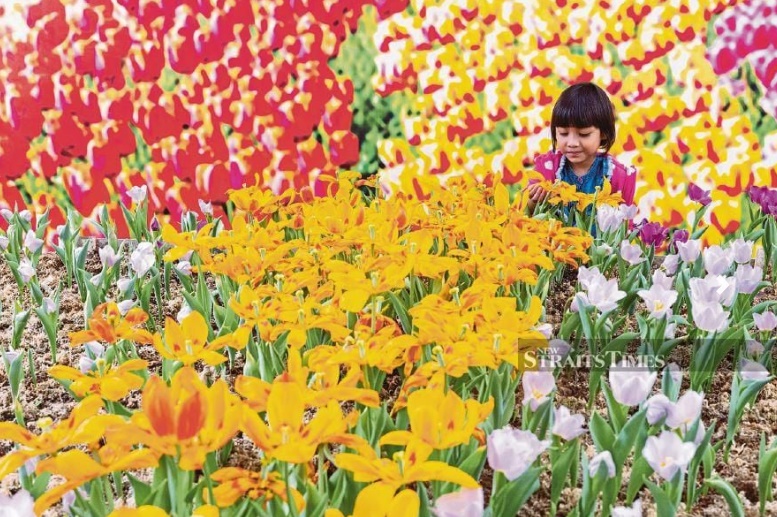
In the picturesque landscapes of Cameron Highlands in Pahang, the national flower of Turkey and the Netherlands, tulips, have burst into a riot of colours, capturing the hearts of beholders. With over 2,500 tulips thriving in Malaysian soil, their full bloom is not just a spectacle but a vibrant display attributed to the country's prevailing higher temperatures.
An unexpected home
Lokmanulhakim Basiron, the general manager of the Malaysian Agricultural Research and Development Institute (Mardi) station in Cameron Highlands, proudly shared that this marks their third consecutive year of cultivating tulips at the Agro Technology Park Mardi. The tulips have found an unexpected home in the tropical Malaysian climate and become an annual attraction, drawing unexpected visitors who flock to witness the blooming beauties. Originating from Iran and Turkey, these tulips undergo seed-breeding technology led by the Netherlands (Holland), and these bulbs are imported from there. "The Cameron Highlands Agro Technology Park Mardi planted 300 tulips in February 2022 at the Cameron Mini Flower Garden in conjunction with the school holidays. "In February last year, we planted 1,500 bulbs, and last month — 2,500 bulbs," he said at the park recently.
Ideal condition for Tulips
Lokmanulhakim explained that tulip flowers bloom gradually, displaying colours within five to 10 days after being transplanted into warm soil. However, they continue to bloom for two to three weeks, depending on the weather conditions. He elaborated that the ideal temperature for growing them is below 12° C and the flower has a temperature tolerance limit of up to 29° C. "Tulips need more direct sunlight either in the morning or evening. They do not do well in high heat. The soil must have good drainage, a neutral to slightly acidic pH between 6 and 7, and be fertile and dry or sandy. So mulch, such as sphagnum moss, is used to control soil temperature and sustain moisture," he added. Lokmanulhakim said after the end of the flowering period, the stems and leaves must wilt naturally and turn yellow or brown before they are removed from the soil.
If the leaves are removed while still green, there will be insufficient food in the bulbs to bloom the following year, he said. "Cleaned tulip bulbs are stored in mesh bags at below 5° C in a cold room for 12 weeks to six months during their dormancy/inactive phase. "Then they are transferred to Leca (lightweight expanded clay aggregate) balls, a type of medium for rooting, at room temperature for a fortnight. After that the bulbs are placed in a planting medium such as peatgrow for three to four weeks to encourage growth before being transferred to the display site," he said.
Flower varieties
He listed this year's varieties as Rood (red), Yellow Baby (yellow), Flair (orange mix), Roze (light purple), Paars (dark purple), and Flaming Baby. Apart from the tulip festival, there are a variety of Mediterranean fruits such as apples, pears, grapes and strawberries as well as popular flowers such as impatiens, camellias, dahlias, petunias, lilies and roses. The park serves as a stopover for highland tourism in Cameron Highlands, strategically located near the town of Tanah Rata. Positioned at an elevation of 1,400 metres above sea level, the area maintains a comfortable temperature throughout the year. Cameron Highlands is also home to the oldest tea plantation and the first tea factory in Malaysia, as well as a research centre for green agriculture. Entrance fees are reasonably priced at RM5 for children and senior citizens, RM10 for adults, and free for the disabled. Source - NST
